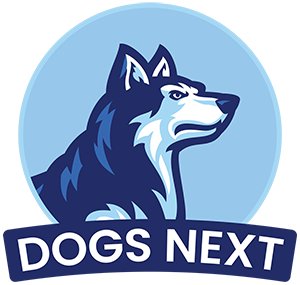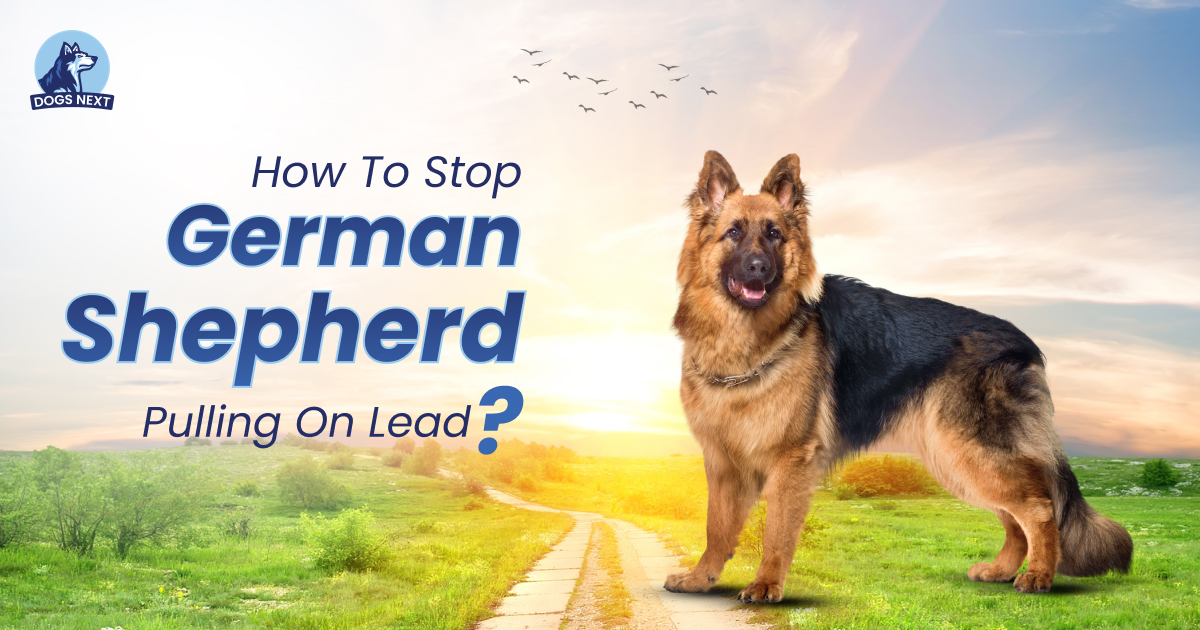Does your German Shepherd constantly pull on the lead during walks, making the experience more of a tug-of-war than a pleasant outing? You’re not alone. Many German Shepherd owners face this common issue, which can turn an enjoyable walk into a frustrating ordeal.
The good news is that with the right training techniques, you can teach your German Shepherd to walk calmly on a lead. Such as using proper equipment, starting with basic obedience training, Using positive reinforcement, Starting in a low-distraction environment, Walking at a consistent pace, Using a short leash, and Practicing the “stop-and-start” method, etc.
In this article, we will explore practical tips and strategies to help you put an end to the pulling behavior and have enjoyable, stress-free walks with your German Shepherd.
Why Does My German Shepherd Pull on the Leash?
Understanding the Behavior
German Shepherds, like many other dogs, may exhibit pulling behavior on the leash for various reasons. Some common reasons why German Shepherds pull on the lead include:
Excitement
Your energetic German Shepherd may pull due to high excitement levels, especially when anticipating a walk or encountering new stimuli.
Lack of Training
Insufficient leash training or inconsistent reinforcement of walking manners can lead to pulling behavior.
Dominance
German Shepherds are naturally strong-willed and assertive, and they may pull on the lead to establish dominance or assert their independence.
The Causes of Leash Pulling
| Causes | Description |
| Excitement | Pulling due to heightened excitement levels, anticipation, or encountering stimuli. |
| Lack of Training | Insufficient leash training and inconsistent reinforcement of walking manners. |
| Dominance | Pulling to assert dominance or display independence. |
How to Stop a German Shepherd from Pulling on the Leash
Teaching your German Shepherd to walk calmly on a lead requires consistent training and positive reinforcement. Here are some effective strategies:
- Start with Basic Obedience: Teach your German Shepherd essential commands like “heel,” “sit,” and “stay” to establish control and reinforce good leash manners.
- Use Proper Equipment: Choose a suitable leash and collar or harness that provides control without causing discomfort or harm.
- Positive Reinforcement: Reward your German Shepherd with treats, praise, and affection for walking calmly by your side.
- Stop and Start Technique: When your German Shepherd starts pulling, stop walking and wait until they release the tension on the leash. Resume walking when they return to your side.
- Change Directions: Randomly change directions during walks to redirect your dog’s attention and encourage them to focus on following your lead.
- Seek Professional Help: If you encounter persistent difficulties, consider consulting a professional dog trainer who specializes in leash training.
Remember, consistency, patience, and positive reinforcement are key to successfully stopping your German Shepherd from pulling on the lead.
When Should You Begin Leash Training?
Leash training should ideally begin as early as possible when you bring your German Shepherd puppy home. It’s important to start with basic leash manners and gradually progress to more advanced training. Here are some key considerations for leash training:
- The Right Collar and Leash: Choose a collar or harness that fits your German Shepherd comfortably and provides control without causing harm. Opt for a sturdy leash that allows for easy handling.
- Training Age: Start introducing your German Shepherd to the leash and basic commands around 8 to 10 weeks of age, once they have settled into their new environment.
- Training Sessions: Keep training sessions short and frequent, as puppies have shorter attention spans. Gradually increase the duration and difficulty level as your German Shepherd grows.
Importance of Leash Training
Leash training is crucial for both the safety of your German Shepherd and your control during walks. It establishes a foundation of discipline and proper behavior. Here’s why leash training is important:
Safety: Leash training prevents your German Shepherd from darting off into dangerous situations, such as traffic or unfamiliar territory.
Control: It gives you the ability to guide and direct your dog’s movements, ensuring a harmonious and enjoyable walking experience.
Socialization: Leash training promotes positive interactions with other people and dogs, fostering good social behavior.
Basic obedience training goes hand in hand with leash training. By teaching your German Shepherd basic commands like “heel,” “sit,” and “stay,” you establish control and reinforce good leash manners.
Lure and Reward Method, Reverse Direction Method, Clicker Method
Leash training can be accomplished using various methods. Here are a few effective techniques:
| Training Method | Description |
| Lure and Reward Method | Use treats to guide your German Shepherd into the desired position alongside you, rewarding good behavior. |
| Reverse Direction Method | When your German Shepherd pulls, abruptly change direction, teaching them that pulling leads to a dead end. |
| Clicker Method | Pair a clicker sound with treats to mark and reward desired behaviors, reinforcing leash manners. |
Experiment with these methods to find the one that works best for your German Shepherd. Consistency and positive reinforcement are key to successful leash training.
Choosing the Right Equipment
Selecting the appropriate leash and collar or harness for your German Shepherd is essential for effective leash training. Consider the following factors when choosing equipment:
- Size and Strength: Ensure that the leash and collar or harness are suitable for your German Shepherd’s size and strength. Opt for sturdy materials that can withstand pulling.
- Comfort: Prioritize your dog’s comfort. Look for padded collars or harnesses that distribute pressure evenly and prevent discomfort or irritation.
- Control: Choose a leash length that provides you with adequate control while allowing your German Shepherd some freedom to explore. Retractable leashes may not be suitable for leash training as they can encourage pulling.
Positive Reinforcement Techniques
Positive reinforcement is a powerful tool for leash training. Here are some effective techniques to reinforce good leash manners:
- Treats: Use small, high-value treats as rewards for walking calmly on the lead. Treats should be enticing and given immediately after the desired behavior.
- Praise: Offer verbal praise, such as a cheerful “Good boy!” or “Good girl!” to acknowledge and encourage your German Shepherd’s proper leash behavior.
- Clicker Training: Pair a clicker sound with treats to mark the desired behavior, helping your dog understand what they’re being rewarded for.
Loose-Leash Walking Exercises
To promote loose-leash walking, practice the following exercises and techniques:
Changing Directions: Randomly change your walking direction, rewarding your German Shepherd for staying close and following your lead.
Verbal Cues: Use verbal cues like “heel” or “walk” to signal your dog to walk beside you. Reward them when they respond appropriately.
Leash Tension: Maintain a consistent but relaxed leash tension. Avoid pulling or allowing excessive slack on the leash.
Remember to be patient and consistent during these exercises. With practice and positive reinforcement, your German Shepherd will learn to walk calmly on the lead, making your walks enjoyable for both of you.
Troubleshooting Common Challenges
Leash training can come with its fair share of challenges. Here are some common issues and practical solutions to help you overcome them:
| Challenges | Solutions |
| Pulling Behavior Relapses | Reinforce training consistently, and redirect attention when your German Shepherd starts pulling. |
| Stubbornness | Stay patient and persistent, and use positive reinforcement techniques consistently. |
| Distractions | Practice in low-distraction environments, and gradually expose your German Shepherd to stimuli. |
| Fear or Anxiety | Gradually introduce the leash and walking routine, and provide reassurance and positive experiences. |
Remember, each dog is unique, and it may take time to overcome specific challenges. Adjust your training approach accordingly and seek professional help if needed.
Additional Tips for Success
Here are some additional tips and advice to enhance your leash training experience and ensure success:
Regular Exercise
German Shepherds are high-energy dogs, so providing regular exercise and mental stimulation can help reduce their urge to pull during walks.
Consistency and Patience
Be consistent with your training efforts and patient with your German Shepherd’s progress. Rome wasn’t built in a day, and consistent practice will yield better results.
Seek Professional Trainers
If you encounter persistent difficulties or need extra guidance, consider enlisting the help of a professional dog trainer who specializes in leash training.
Positive Environment
Make the walking experience enjoyable for both you and your German Shepherd. Use walks as opportunities for bonding and exploration, and always maintain a positive and encouraging demeanor.
Frequently Asked Questions
Q: How do I get my German Shepherd to stop pulling on the leash?
Ans: To stop your German Shepherd from pulling on the leash, use positive reinforcement techniques, such as rewarding good behavior and redirecting attention. Consistent training, teaching basic commands, and practicing loose-leash walking exercises are key.
Q: Why do German Shepherds pull on the leash?
Ans: German Shepherds may pull on the leash due to excitement, lack of training, or a display of dominance.
Q: How do you train a German Shepherd to walk on a leash without pulling?
Ans: Train your German Shepherd to walk on a leash without pulling by teaching basic obedience commands, using positive reinforcement, and practicing loose-leash walking exercises. Consistency, patience, and rewarding desired behavior are essential.
Q: How do I control my German Shepherd while walking?
Ans: Control your German Shepherd while walking by using appropriate equipment, such as a well-fitted collar or harness and a sturdy leash. Practice training exercises, maintain consistent leash tension, and use verbal cues to guide their behavior.
Q: Best leash for a German Shepherd that pulls?
Ans: A sturdy and durable leash, such as a thick nylon or leather leash, is recommended for a German Shepherd that pulls. Avoid retractable leashes and opt for a length that provides control without causing discomfort.
Q: Slip lead for the German Shepherd?
Ans: A slip lead can be used for a German Shepherd, but it should be used with caution and proper training. Consult with a professional dog trainer to ensure its correct usage and to address any concerns.
Q: How to stop dog anxiety and aggression pulling on the leash?
Ans: To address anxiety and aggression-related pulling on the leash, it is crucial to identify and address the underlying causes. Consult with a professional dog behaviorist or trainer experienced in handling anxiety and aggression issues for appropriate guidance and techniques.
Conclusion
In conclusion, teaching your German Shepherd to stop pulling on the lead is an achievable goal with patience, consistency, and the right training techniques. By understanding the underlying reasons for pulling behavior, selecting the appropriate equipment, and employing positive reinforcement methods, you can transform your walks into enjoyable and stress-free experiences.
Remember to start leash training early, prioritize basic obedience commands, and practice loose-leash walking exercises. Troubleshoot common challenges with determination and seek professional help if needed.
By following these strategies and tips, you can successfully put an end to your German Shepherd’s pulling habit and enjoy peaceful walks together. Say goodbye to the tug-of-war and embrace the joy of walking harmoniously with your well-behaved German Shepherd. Good luck!

I’m David, an expert contributor and writer, with two furry friends of my own, I know the challenges of raising and caring for dogs. From training to nutrition and health, my goal is to provide valuable insights and advice to help create strong bonds and happy, healthy lives. Find me in Twitter.




